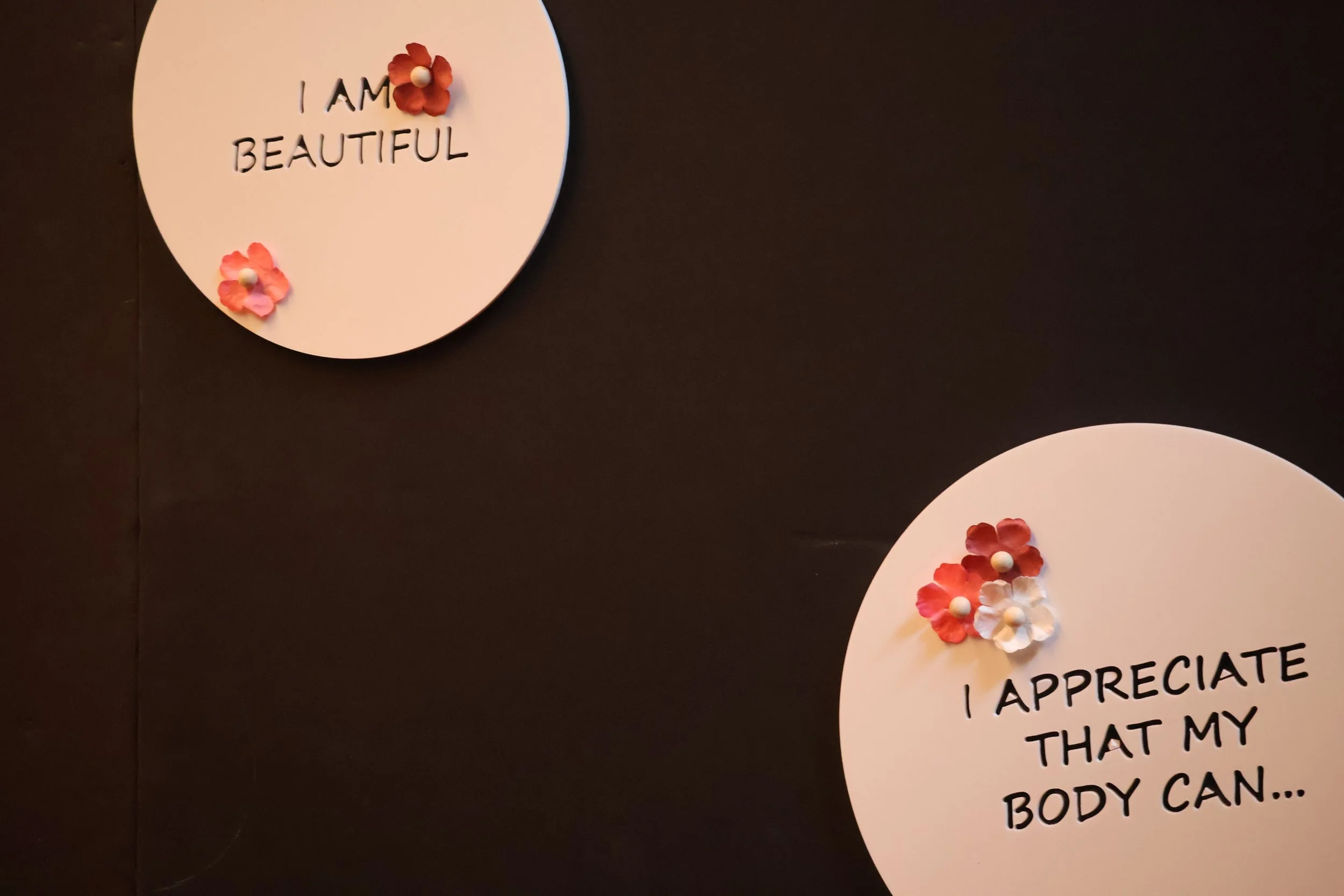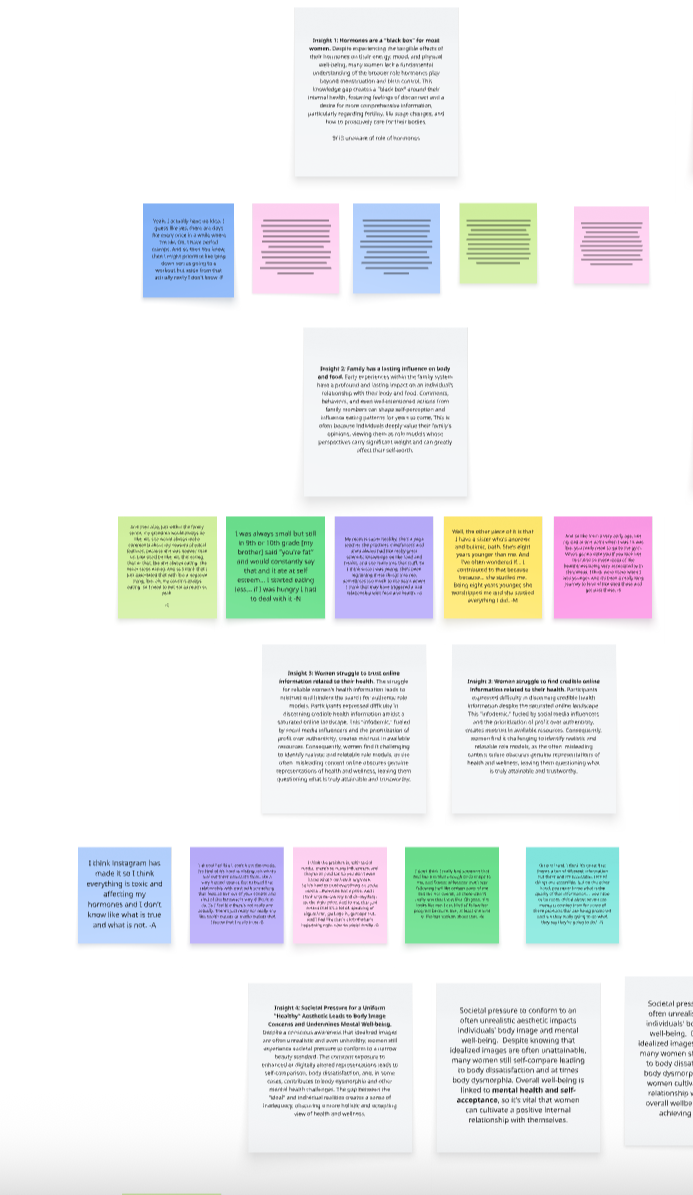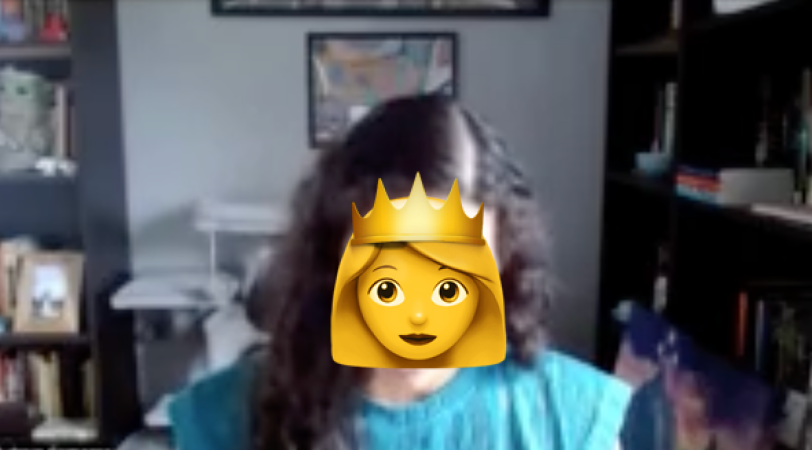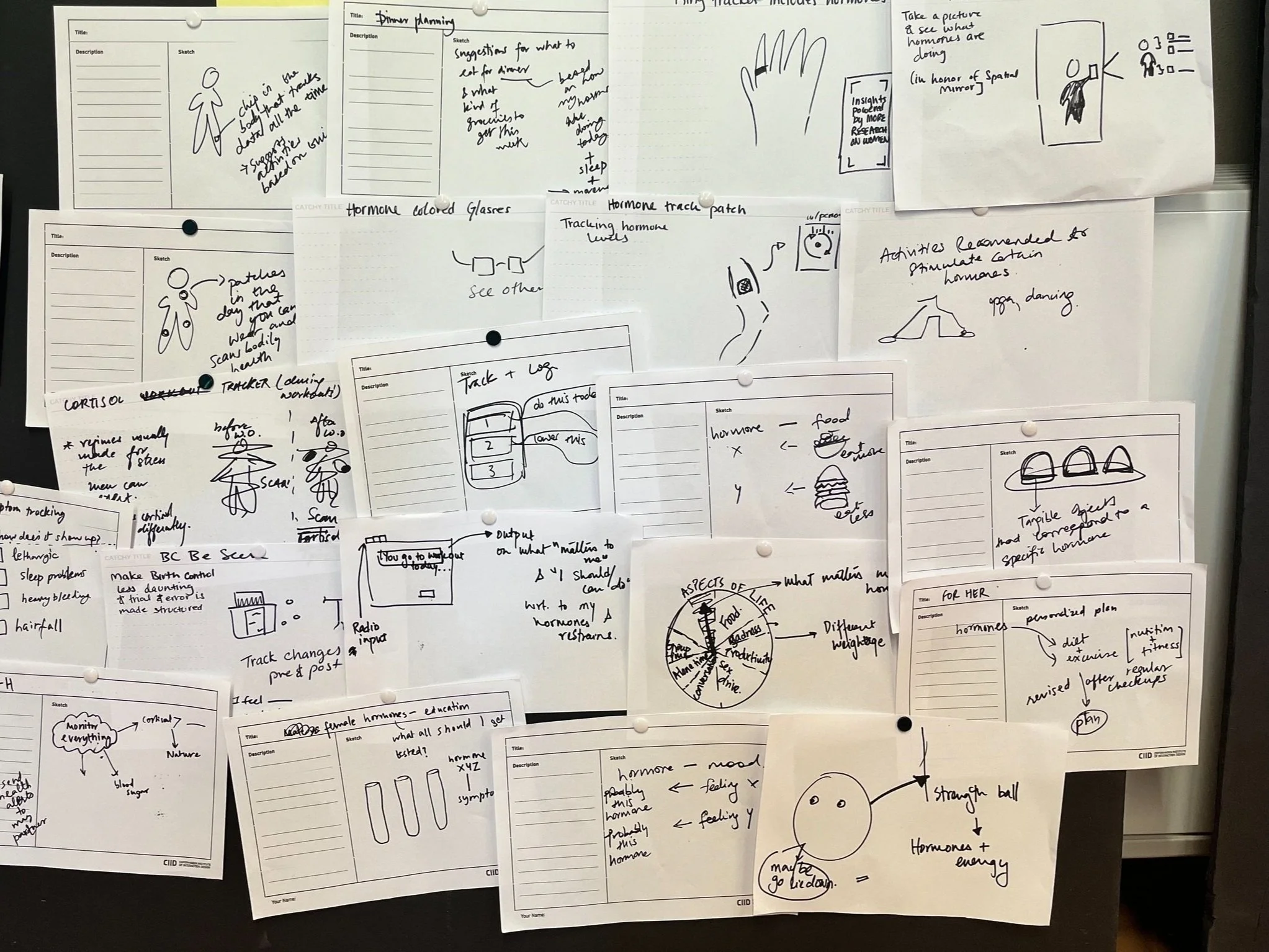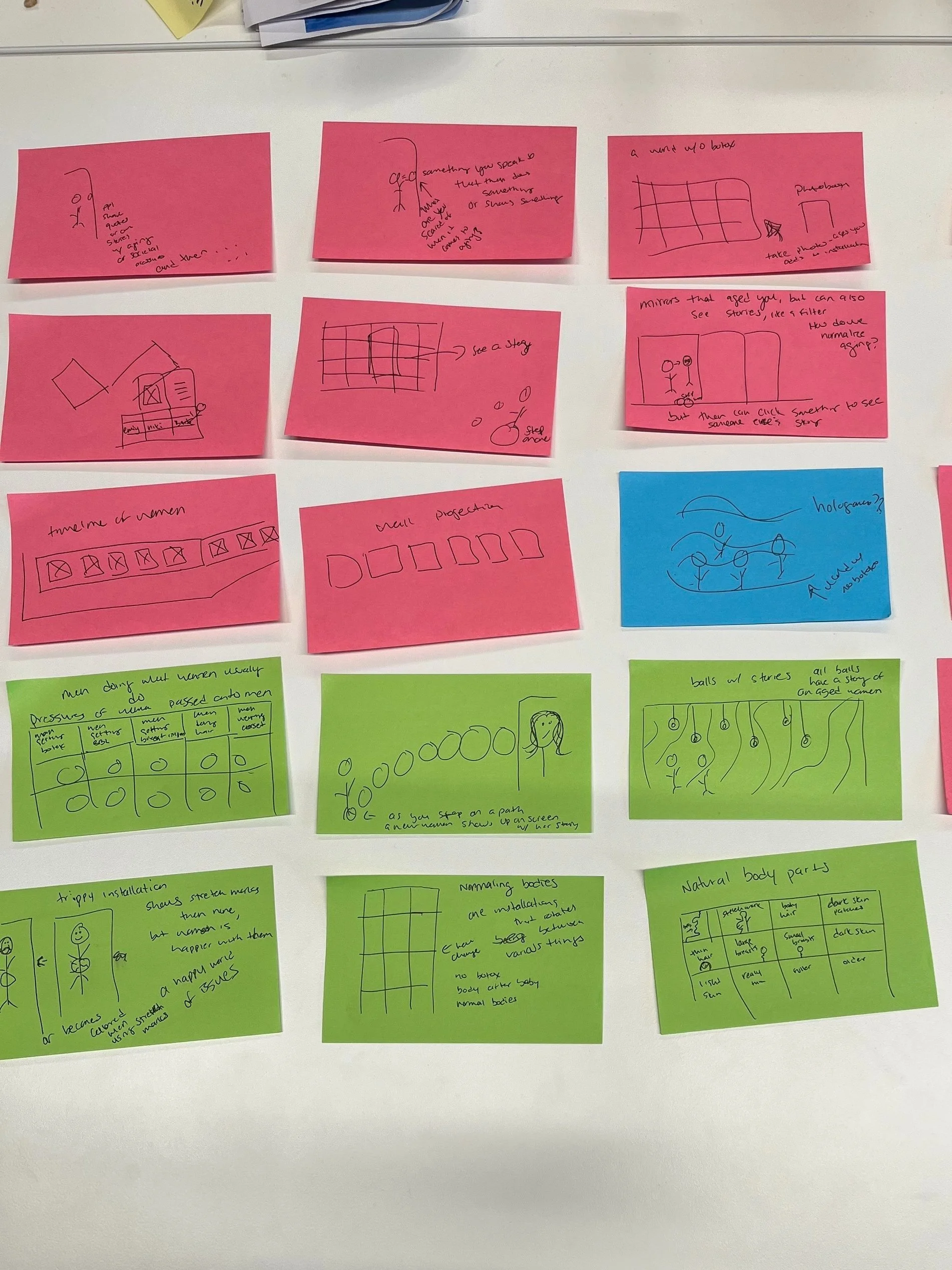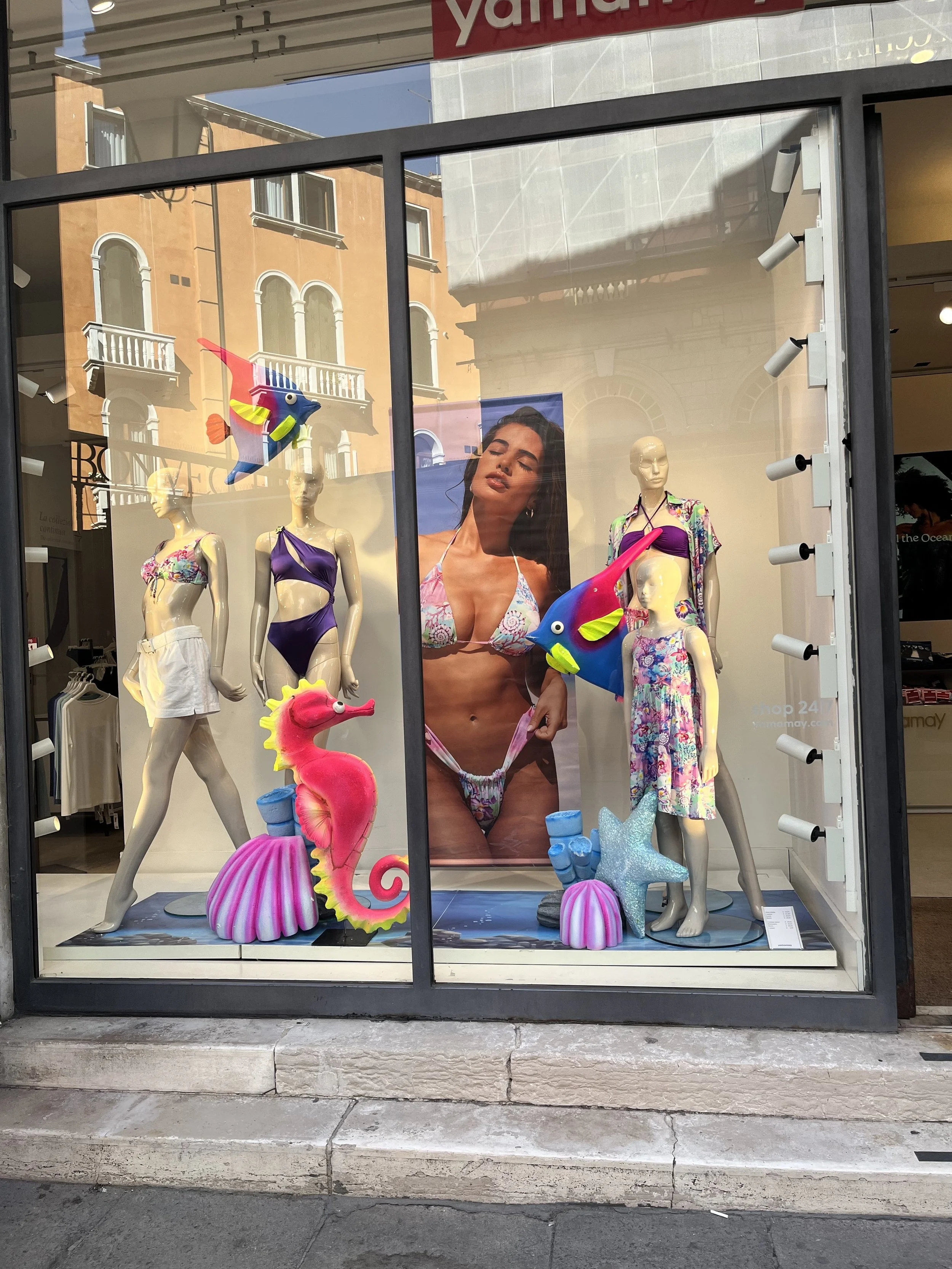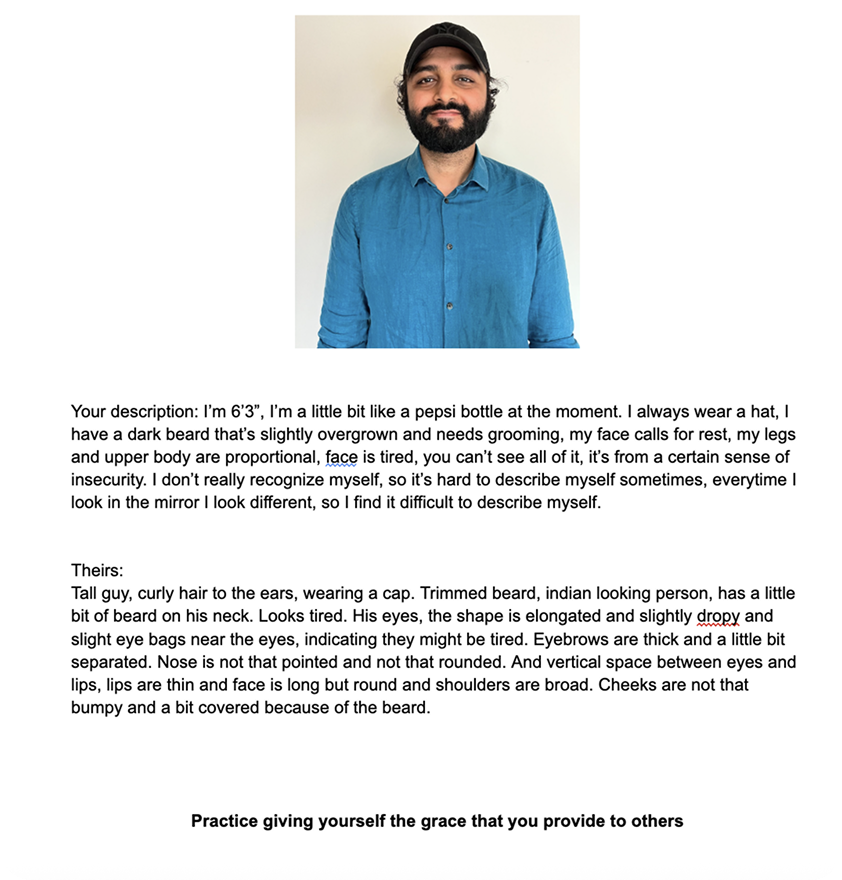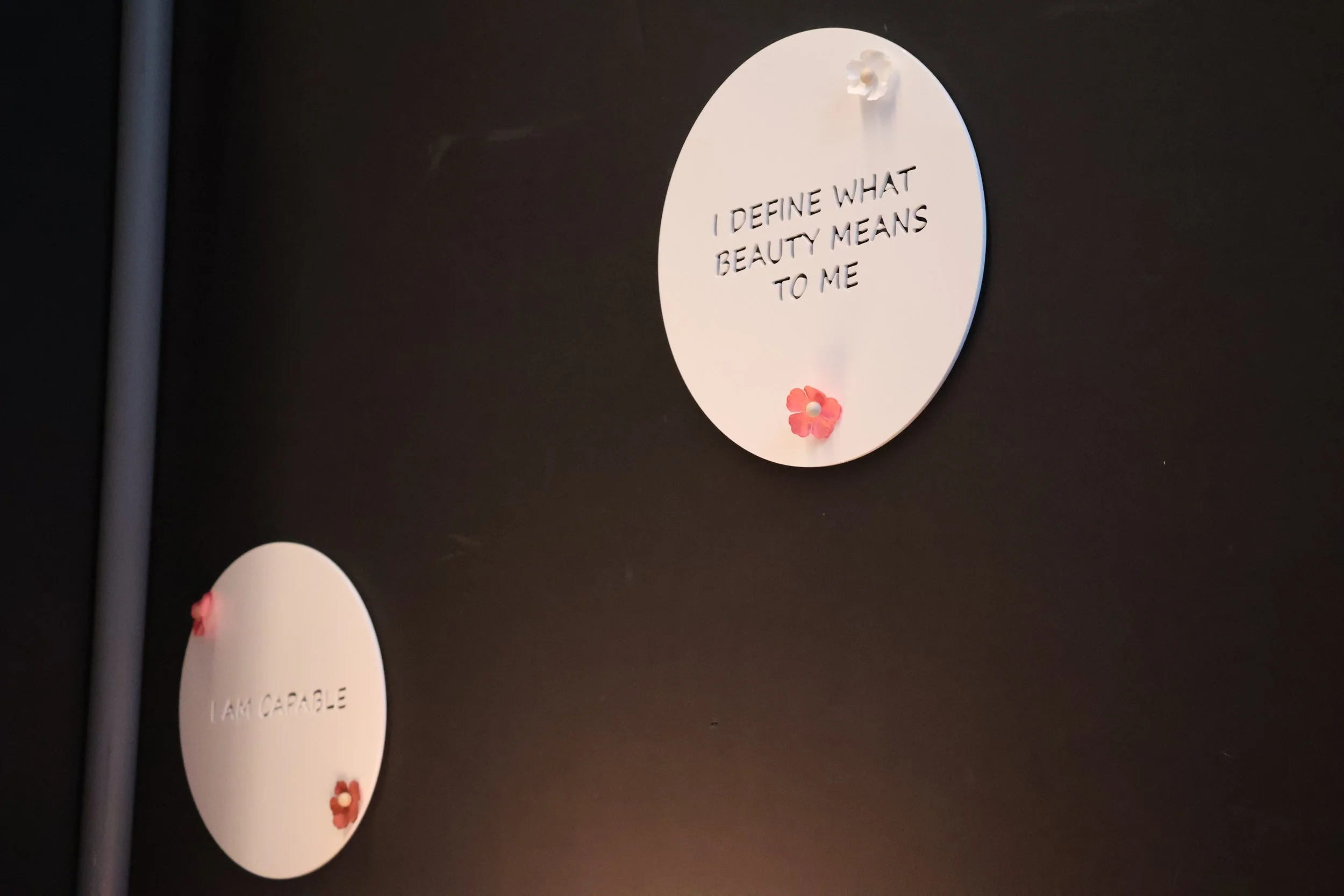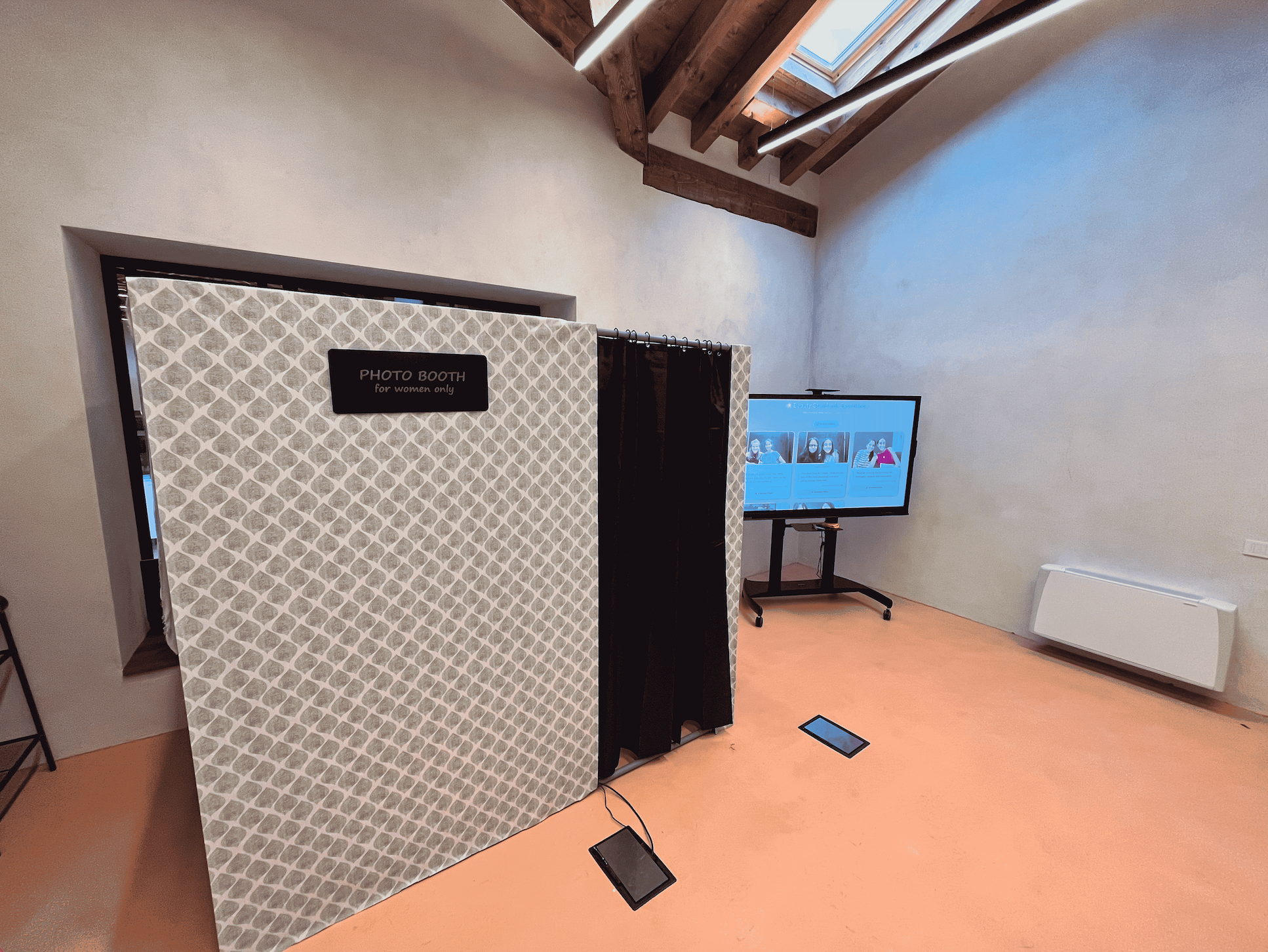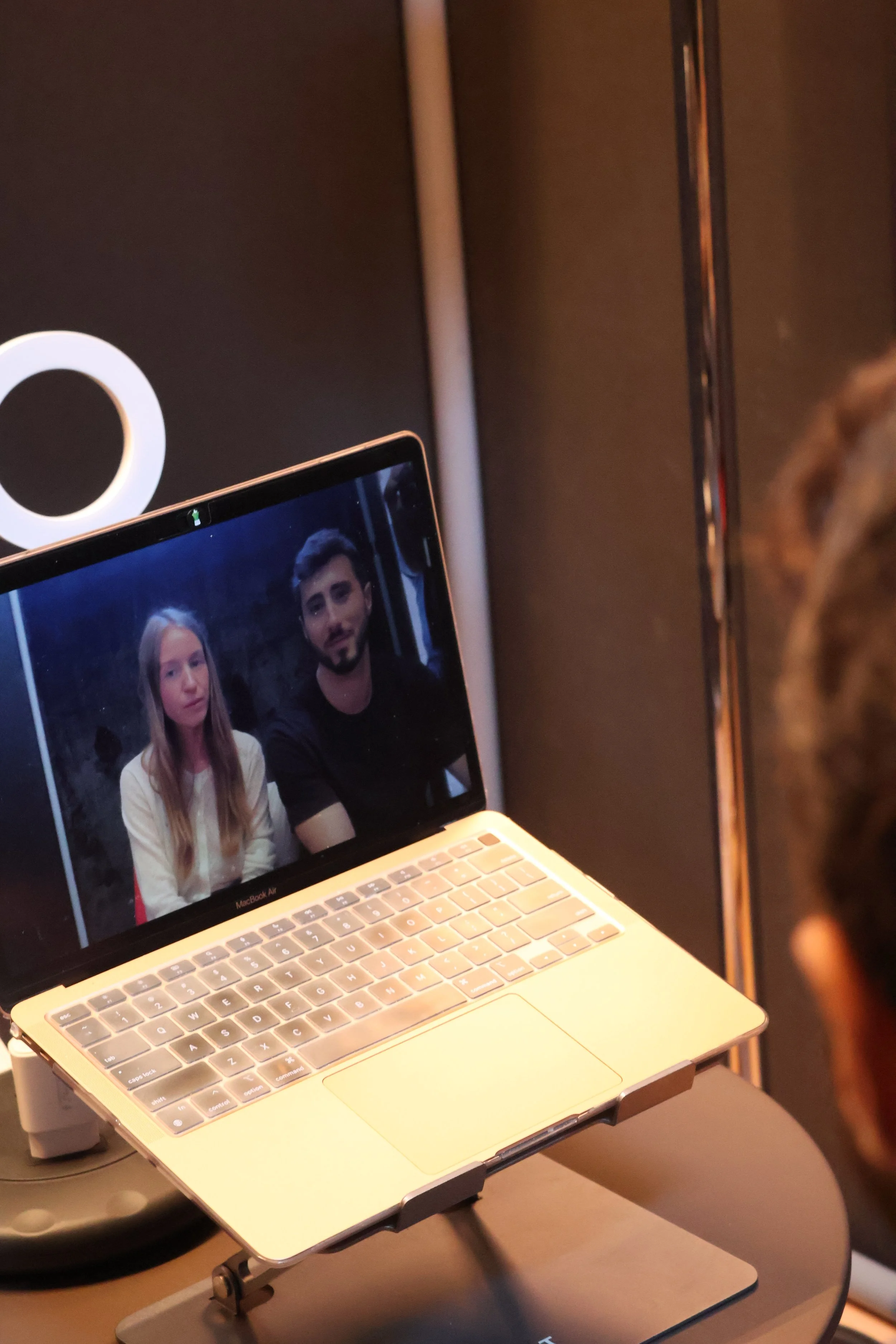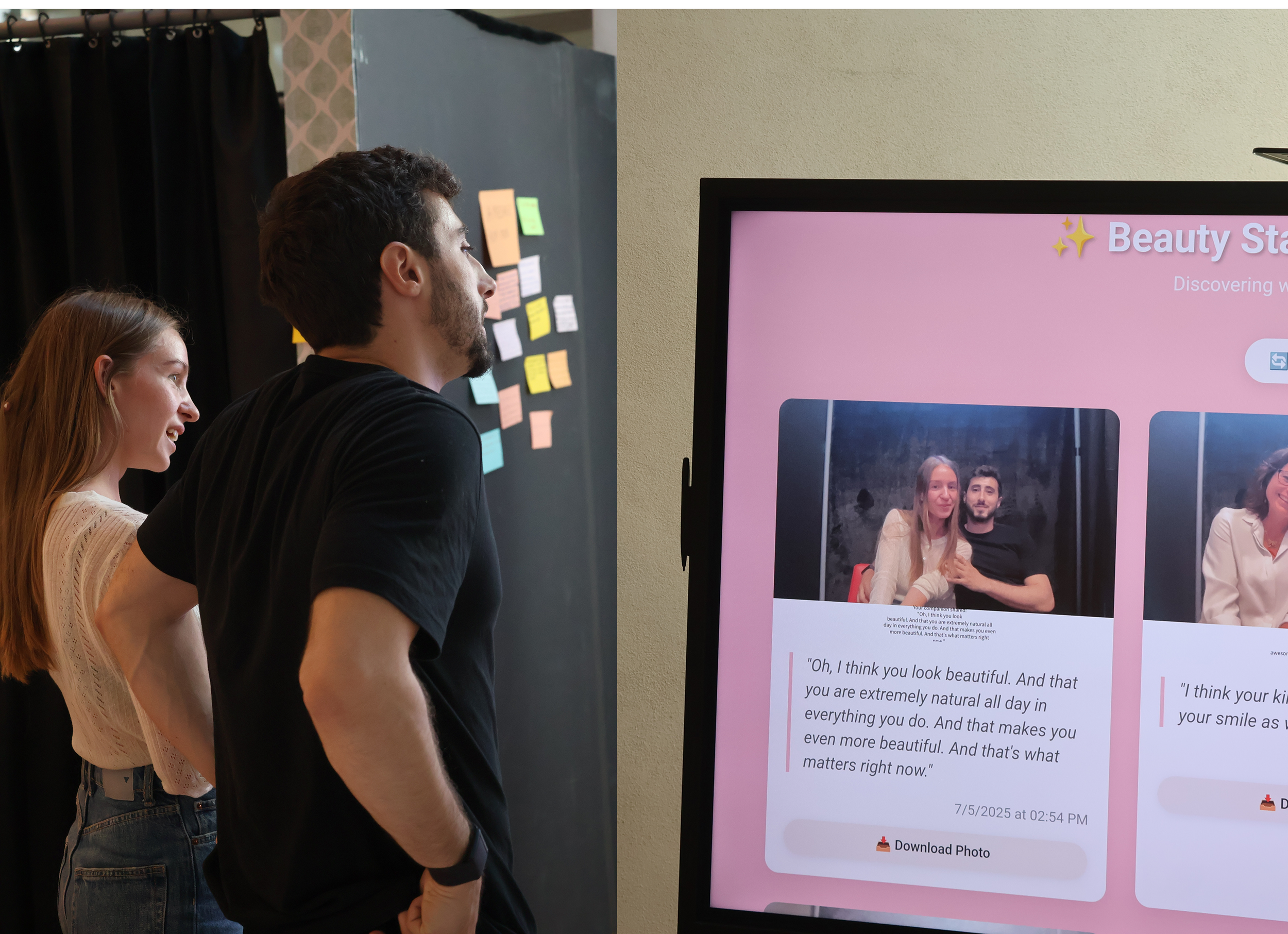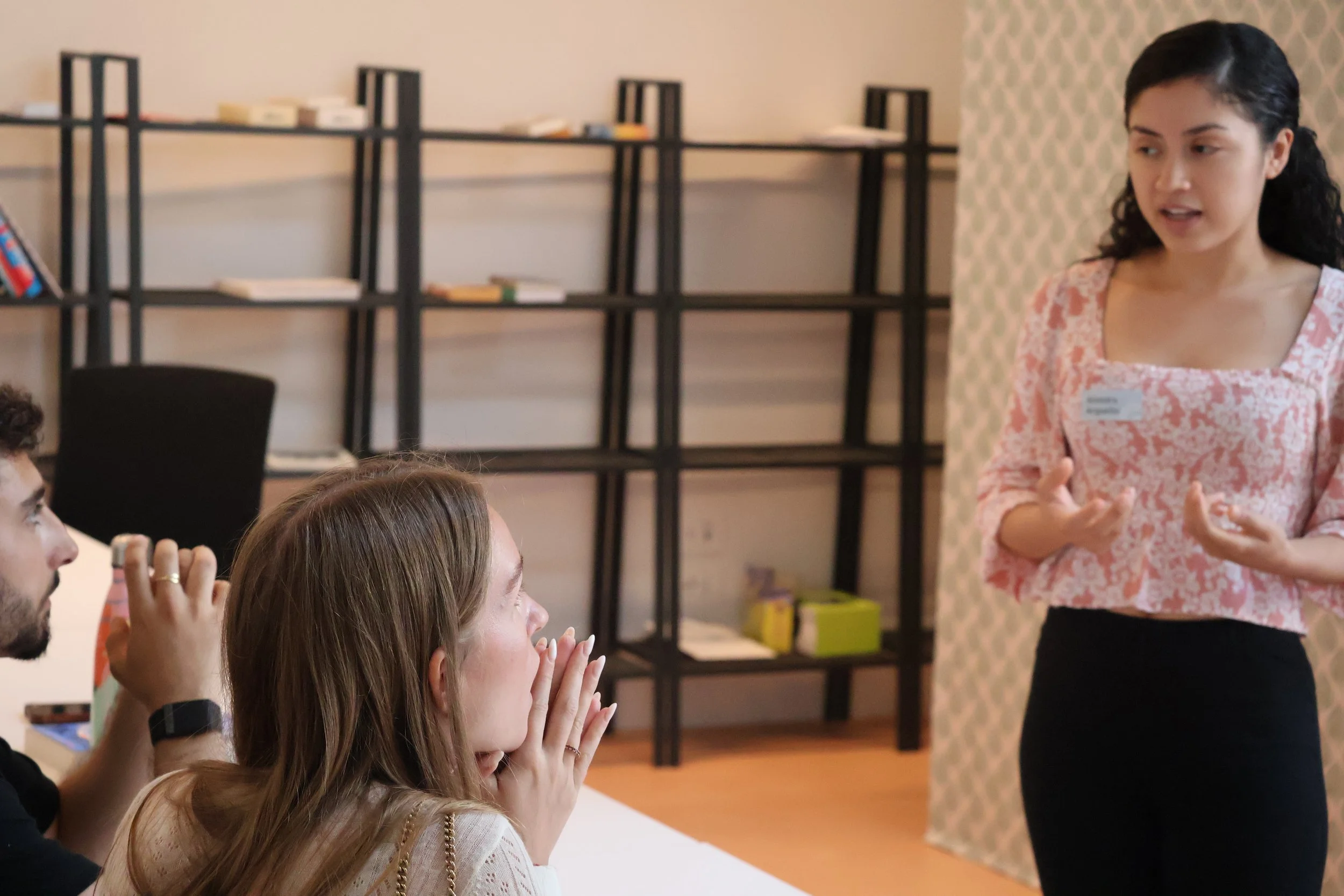Detailed Process for “Your Inner Critic”
Qualitative Research
I interviewed 24 women, one-on-one, virtually, and in person, including former athletes, mothers, women who struggled with eating disorders, and women with chronic health conditions.
Interview topics included health challenges, societal impact, body image, and health tools.
*This research was also used to influence my project “Maeve Health.”
Research Synthesis
Participant Clustering
I used Miroboard for analysis. After each interview, I bucketed what I heard for each participant into categories such as challenges, wishes, and needs.
Themes and Patterns
To help me narrow down what was important, I tracked recurring themes, with supporting quotes, as I interviewed more participants.
Insights
Finally, I was able to think further about the motivations and “whys” of the participants to help confirm a specific design direction.
Insights
Societal pressures take a toll on mental health
Despite knowing that idealized images are often unattainable, many women still self-compare, leading to body dissatisfaction and, at times, body dysmorphia. This can shift their focus to achieving an external ideal instead of cultivating a positive internal relationship with themselves in order to improve their overall well-being.
Credible health info is difficult to come by
Many women expressed difficulty in finding credible health information despite the saturated online landscape. This “infodemic,” fueled by social media influencers creates mistrust in the online resources. Additionally, misleading content obscures genuine representations of health and wellness, leaving them questioning what’s actually attainable.
Hormones are a “black box”
Many women lack a fundamental understanding of the role hormones play beyond menstruation and birth control. This knowledge gap creates a "black box" around their internal health, creating feelings of disconnect and a desire for more holistic information, particularly regarding fertility, life stage changes, and how to proactively care for their bodies.
Chosen Insight
Societal Pressures take a toll on mental health- Though society is headed in the right direction when it comes to beauty standards, we haven’t reached full body inclusivity yet. It was important to create a solution that can spark important conversations and increase awareness.
“There's a certain kind of person that is on the screen, more often than other people. There's always one sort of cookie-cutter person that they want, and so when you look in the mirror and you don't see that, you're like, oh, something's wrong, and so I need to fix that, but at the same time, I hate that… I don't even know how to explain it.”
Female, 25
“Growing up, the most beautiful people were stick figures with blonde hair and blue eyes. For a long time, I wish I didn't have curves... I think society is wanting to create a human that's not even real where they have curves, but they're also that stick figure, and I think that consciously plays an influence on how I feel when I look in the mirror.”
Female, 31
“When you're young, there's all these images of what healthy looks like and it's all these really skinny women and when I was younger I definitely thought that was what healthy was and I thought that's what beautiful was… I was a little bit bigger as a kid, so that just really stuck with me and I would be lying if I said it doesn't stick with me now.”
Female, 23
Ideation
Based on the how might we: “how might we challenge societal perceptions of “healthy” aesthetics so that women can embrace body diversity, develop greater self-acceptable and prioritize their overall well-being?” I had multiple rounds of ideation.
To spread awareness and spark conversation, I wanted to explore an installation route.
Additionally, I experimented with the idea of a mirror interaction to emphasize the concept of an inner reflection.
Inspiration
While walking around Venice, I noticed that the women and mannequins in the store windows looked the same- thin and flawless. This is what was getting reflected back at me, whether it was subconsciously or consciously, it was influencing my concept of beauty. I wondered what a world would look like if we had a different perception of beauty.
What if this model had stretch marks?
What if these mannequins had love handles?
What if this mannequin had body hair?
Prototyping
Inspired by the Venice ads, my initial prototype featured real ads from different decades. I wanted to emphasize that for decades women have been told how to look and what defines beauty. The interaction included scrolling through a timeline of ads.
Users testing my initial prototype
Additional inspiration
I was inspired by a Dove ad that asked women to describe themselves and describe other women. A sketch artist would draw them based solely on the description.
They found that women's self-descriptions were harsher and less accurate than their descriptions of others. It highlighted a key dynamic: our tendency to be kinder to others than to ourselves. This disparity inspired my project's goal of encouraging self-kindness.
I experimented with asking people to describe themselves and then providing them with an AI generated description
I experimented with asking people to describe themselves and someone else:
Feedback
“It’s too passive”
-men and women
“Well everyone critiques themselves”
- a man
“Ugh, I’m so angry, I want to hug that girl”
- a woman
I noticed that there was an overall difference in how men and women interacted with the prototype. Since women were familiar with societal beauty pressures, they were able to easily empathize. Although men experience their own societal challenges, it was difficult for them to put themselves in the shoes of a woman. I believe that men should understand these women felt challenges but that felt like a different problem. As a result, I decided to focus solely on empowering women.
Iterating
Given the feedback that the initial prototype was “too passive,” I began to think about replicating the inner critic women carry and experimented with directly critiquing women based on the beauty standards of specific decades. I decided to test this with a classmate; I generated critiques based on her appearance and played them out loud in front of the class.
My classmate and I testing critiques in front of a mirror before testing in front of the class.
An example of the critiques my class heard about my classmate during testing:
1950s
I’ll be honest, I can’t find your waist. It’s a little boyish. And where is the bold red lipstick and the neat chignon? If you’re shooting for undesirable, you got it.1970s
You’re way too curvy. It would be preferred if you were lean. You’re also missing an earthy eyeshadow look. Your hair is long, but it’s missing oompfh.1990s
Let’s face it. Your body and your eyebrows are too big and your hair is too flat.
Observations
The critiques impacted observers more than the critiqued.
The critique audio elicited gasps, with one person nearly in tears due to their concern for the classmate getting critiqued.
A common critique from men was that the message should focus on men.
I thought about this feedback heavily, but ultimately decided that this had to be a solution for women.
Final Iterations
This led to my final iterations where I decided to focus on women who knew each other well and ensured that there was one observer and one person getting critiqued in order to evoke the same emotions my classmates had. I then had the observer say something nice about the other to empathize that beauty extends beyond external appearances.
To symbolize the image we have of women in society, I chose a photo booth as my form factor. It was also a great place for reflection and allowed women to walk away with a photo/memory to continue the conversation.
Testing
Our school hosted an exhibition day where people from the town were able to come and experience our designs. Though I designed this experience for women, many people were keen on trying it out. Below you can see the different pairs who experienced the photo booth.
To begin, everyone was required to sign a consent form, making it clear that they would get critiqued for a good cause!
Pairs were allowed into the booth one at a time for privacy and reflection.
Pairs were able to see their photo and transcription appear on the screen right after the experience.
We had a quick debrief after the experience to check in and reflect.

